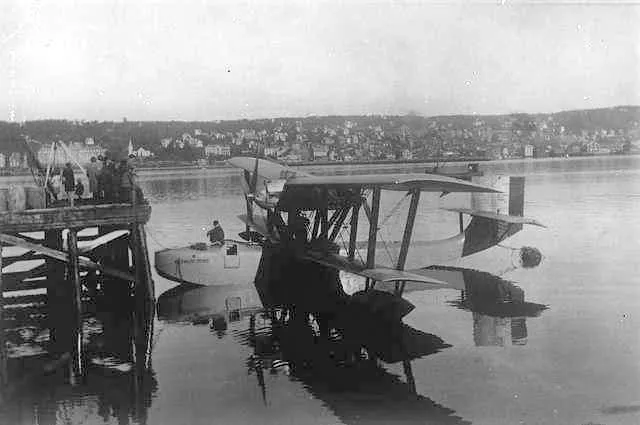
The French Latham
47 flying boat that Amundsen
made his last journey in.
Roald Amundsen - 6
The Last Years and Last Journey - 1926-28
1 - Belgica,
Belgian Antarctic Expedition,
1897 - 1899 - 1st Mate
& Gjoa,
Northwest Passage, 1903-06
- Captain
2 - Fram,
South Pole Expedition,
1911-12 - Expedition Leader
3 - Maud,
Northeast Passage, 1918-25
- Expedition Leader
4 - N24 and N25 Flying
Boats,
North Pole by Air, 1925
5 - Airship Norge,
North
Pole by Air, 1926
6 - The last years
and last journey
to 1928
Roald Engelbregt Gravning Amundsen - 16th July 1872 - 18th June 1928
The End of Exploration
With the success of the Norge expedition in May 1926, Amundsen felt he had now accomplished all that he had set out to do when he first started exploring in his youth, he was now 54 years old.
He said he felt relief that he was no longer exploring, reaching the north pole was the culmination of his ambitions. His bankruptcy proceedings had also come to an end and though his estate was depleted as a result, he was clear and free for the future, a great relief.
 16th
of July 1926 at a reception in Akershus, Norway.
16th
of July 1926 at a reception in Akershus, Norway.
Amundsen
is seen in profile on the right in the back-seat
of the car
speaking to Fritjof Nansen on the left.
He had intended to stop lecturing and pass over this task to Ellsworth in respect of the Norge expedition though he continued to do so through the rest of 1926 and for almost the whole of 1927.
During the latter part of 1926 Amundsen wrote his memoires entitled "My Life as an Explorer" published in 1927. This was largely written while living in the Waldorf-Astoria hotel in New York City, a favourite abode for him over a number of years during his visits to the city, though it was never really very clear how he was able to afford long stays in such an expensive hotel especially with his financial difficulties, or if someone else was paying his bills.
The publication of this book did him few favours, rather than providing an insightful record with new fascinating details and explanations as hoped, it was alternately flippant, over-casual and over-earnest while being big on finger pointing and low on detail. It presented him as a man who had repeatedly escaped his creditors and duped his backers for achievements that consisted sometimes (such as at the South Pole) of getting there and back again with no greater goal or purpose even as an afterthought.
In particular he used the book to dissect the minutiae of his already public falling out with Nobile (and the Norge expedition), a full one third of the book was taken up with this aspect though this was just one year out of a twenty nine year exploring career. He made a point of complaining about his treatment in Britain in the aftermath of his success at the South Pole and the death of Scott and his party of five and also to attack his long-suffering brother Leon's handling of his financial affairs (which Roald seemed to treat as dull and beneath him) leading to his bankruptcy. Even though this latter event was largely a result of appointing an unsuitable business manager, Haakon Hammer and giving him power of attorney over his affairs. His writings opened old wounds with The Royal Geographical Society in London, the National Geographic Society in Washington and with members of Scott's expeditionary team from fifteen years previously.
Something of a diplomatic spat sprang up between Britain and Norway as a result of Amundsen's writings with Nansen stepping in to try and pour oil on the waters saying that Amundsen was not of sound mind in an attempt to stop his comments being taken too seriously and in particular to stop the negative sentiments they raised from being transferred to Norway in general.
At the end of 1927 he met in Norway with Bess Magids, a married woman with whom he had been having an affair for some years since he met her in Alaska while on his Maud expedition, at that time he had been having an affair for several years with another married woman, Amundsen was 55, Magids was 30. She was in the process of divorcing her husband which was finalized in February 1928, she became engaged to be married to Amundsen, the marriage would take place later that year, in June.
Amundsen seems at this time to have been rather sorry for himself for his position after a life-time of exploring. Too old to continue as an explorer but not as well off as he thought he should be, he had no wife or children and he had quarreled with his family. He sold many of the medals and decorations he had been given because he needed the money, though he did have a monthly income from the Norwegian state.
On the 26th of May 1928, Amundsen was at a celebratory lunch for aviators Hubert Wilkins and Carl Eielson following their flight from Alaska to Spitsbergen, a message was received that Nobile had disappeared in his latest airship the Italia. This was a second attempt by Nobile to fly to the North Pole, an entirely Italian expedition intended in part to show that he didn't need anyone else such as Amundsen to lead it. Reporters were present and Amundsen stated his support and said he would help, though any official role was rejected by the Norwegian government at the request of Mussolini.
Though Amundsen had a strong dislike for Nobile (with good reason), he was now in a position where he had to save face having declared his support but being turned down by official channels, he was probably also excited by the adventure of a rescue in the Arctic. Twenty one airplanes and many ships from various nations were taking part in the search. The French government arranged an aircraft and crew for Amundsen to lead his search and rescue attempt, it has been said that Amundsen was being funneled to a position where he couldn't pull out. His own personal pride, his national pride and expectations from others led to him sitting in a French Latham-47 flying boat biplane with five other men, a Norwegian pilot, a French pilot and three other Frenchmen.

Latham-47 Flying Boat in Bergen,
June 1928 on the way to pick up Roald Amundsen at Tromso
On June the 18th 1928, the overloaded aircraft took off into bright sunlight and was described by a fisherman as heading into a bank of fog, climbing to try and fly over it, this was the last anyone ever saw of the aircraft or the men on board. The last radio message was sent at 6pm after which it assumed the aircraft crashed into the Barents Sea. One of the fuel tanks from the flying boat was found at sea some time later, it was considered by experts to have been converted into a makeshift float. This indicates that some of the crew had survived some time after crashing to make this modification and attempt to return to safety. The deaths of Amundsen and the other five crew in the cold waters of the Barents Sea was not as quick and merciful as had been initially thought. The tank is on display in the Polar Museum in Tromso. No trace of the crews' remains were ever found.
Nobile and seven others were rescued from the ice where their airship had crashed five days after Amundsen went missing.

The last known picture taken of Roald
Amundsen, 18th June, 1928, the day he went missing.
Historical pictures from Nasjonalbiblioteket / National Library of Norway, link
Picture of Amundsen Monument used courtesy of Palickap under CC BY-SA 4.0 international licence.
Roald Amundsen Books and Video

The South Pole:
Roald Amundsen, the Norwegian Antarctic Expedition, 1910-1912
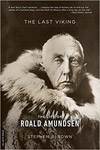
The Last Viking:
The Life of Roald Amundsen
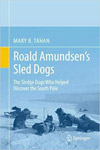
Roald Amundsen's Sled Dogs:
The Sledge Dogs Who Helped Discover the South Pole
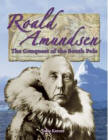
Roald Amundsen
The Quest for the South Pole, ages 9-12

The Amundsen Photographs
discovered in 1986, pictures from three of Amundsen's voyages
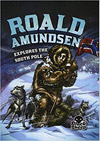
Roald Amundsen Explores the South Pole
ages 7-10






